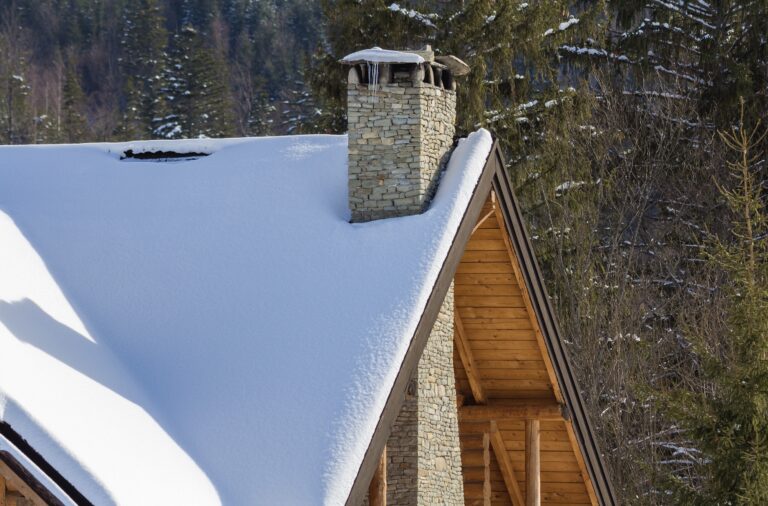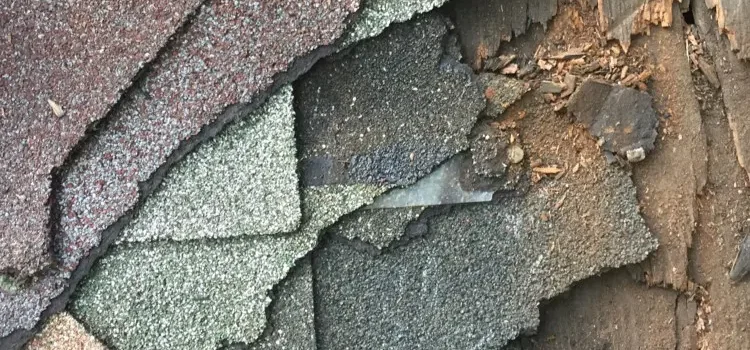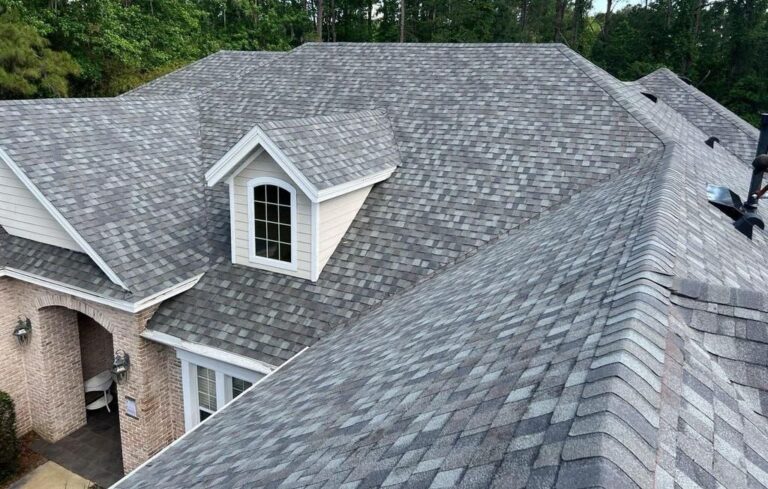Stone Coated Steel Roofing is a lot like the wrestling character Stone Cold Steve Austin. Strong, stylish, tons of longevity, and is ready to protect at all costs. So what exactly is Stone-Coated Steel Roofing, and is it something you should consider implementing yourself?” In this article, we’ll unpack everything you need to know about Stone Coated Steel roofing: what it is, how it works, and whether it’s the right fit for your property.
What is Stone Coated Steel Roofing?
Stone Coated Steel Roofing is a modern evolution of metal roofing that combines the strength of galvanized steel with the seamlessness and texture of traditional roofing materials like tile, slate, or wood shake. Fundamentally and at its core, it’s a stone-coated steel roofing system, a category that first emerged in Europe in the 1950s as a post-war innovation. After World War II, European builders needed something quick and affordable to cover homes. Concrete and clay tiles were too heavy and slow to install. So, they came up with a lightweight fix: steel panels with a stone coating. Fast forward to today, and that same idea has been fine-tuned into something much stronger, sleeker, and made for the long haul.
Each panel is made from galvanized or Galvalume steel and coated with a weather-resistant adhesive layer, embedded natural stone granules, and a clear acrylic topcoat. The result is a roof that mimics that classic look of shingles, clay tiles, or cedar shakes, without the cracking, splitting, or excessive weight of those traditional materials. It’s designed to be both durable and beautiful, just like Stone Cold Steve Austin.
How does Stone Coated Steel Roofing differ from other roofing?
Stone Coated Steel Roofing sets itself apart from both traditional and modern roofing materials in several key ways:
| Roof Type | Material | Pros | Common Drawbacks |
|---|---|---|---|
| Asphalt Shingles | Fiberglass with asphalt and granule coating | Affordable, easy to install, widely available | Short lifespan, low wind and hail resistance |
| Clay or Concrete Tile | Natural clay or molded concrete | Excellent durability, classic appearance | Heavy, expensive, brittle under impact |
| Wood Shake | Natural cedar or redwood | Rustic appearance, moderate insulation | Fire risk, high maintenance, prone to rot |
| Standing Seam Metal | Aluminum or steel panels | Modern look, lightweight, recyclable | Visible fasteners, potential denting, noisier |
| Stone Coated Steel Roofing | Steel core with stone granule finish | High impact/fire resistance, low maintenance, elegant appearance | Higher upfront cost, requires professional installation |
What’s the typical lifespan of roofing material?
When looking at roofing systems, it isn’t just about upfront cost; it’s also about how long it lasts. This chart compares the average lifespan of common roofing materials, helping you weigh long-term durability alongside other factors like aesthetics, maintenance, and performance. Take note that Stone Coated Steel Roofing stands out as one of the options with the longest lifespans!
Common applications
Stone Coated Steel Roofing’s combination of performance and aesthetics makes it highly versatile. It’s ideal for properties that need protection from the elements and curb appeal.
Residential
- Custom homes, luxury builds, cabins, vacation homes
- Ideal for roofs with high pitch or complex architecture
Commercial
- Office buildings, places of worship, barns, schools, and retail
- Works well for buildings seeking low lifetime maintenance costs
Rural or High-Risk Zones
- Wildfire-prone areas benefit from Class A fire ratings
- Hail-prone states (like Colorado or Texas) benefit from Class 4 impact resistance
- Coastal homes appreciate corrosion resistance and wind performance
Because of its layered construction and ability to mimic natural materials, Stone Coated Steel Roofing is also popular in historical renovations or design-restricted neighborhoods where traditional looks are mandated but modernity is desired.
Material composition and engineering
The root and success of Stone Colde Steel Roofing lies in its composition and engineering. At its core is a galvanized or Galvalume steel panel, known for its out-of-this-world strength and corrosion resistance. That’s important because the weather here in Colorado (Denver, Boulder or the mountains) can be corrsoive, although it leads to many people skiing here in Colorado and moving here which is pushing up property values! But what sets this particular system apart is its multi-layer design, where each component plays a specific role in extending the roof’s life and performance in extreme weather.
| Layer | Purpose |
|---|---|
| Steel Core | Provides structural strength and fire resistance; acts as the foundation of the roofing system. |
| Zinc-Aluminum Coating | Protects against rust, corrosion, and chemical breakdown, especially in humid, coastal, or snowy climates. |
| Stone-Coated Granules | Add textured surface and color while improving resistance to UV radiation and weathering. Also helps mimic traditional materials like tile or shake. |
| Acrylic Overcoat | Seals in the granules prevent fading and shield the roof from water, wind, and environmental damage. |
Together, these layers make Stone Coated Steel Roofing not only strong but also visually appealing and low-maintenance. Most systems meet or exceed Class 4 impact resistance (the highest rating for hail) and Class A fire ratings, making them a perfect fit for regions prone to wildfires, storms, or heavy snow loads.
Stone Coated Steel Roofing installation process
Let’s be clear here: Stone Coated Steel Roofing is not DIY and should only be attempted by professionals with experience in this type of roofing. Unlike normal run-of-the-mill shingles or even standard metal panels, this roofing type features interlocking panels designed for enhanced weather resistance and longevity. But with that advanced engineering comes complexity.
💡 Why it’s not DIY-friendly
While some roofing systems can be tackled by experienced homeowners or general contractors, Stone Coated Steel Roofing requires:
- Specialized tools for cutting and bending panels
- Correct fastener placement to prevent wind uplift
- Precise alignment to ensure watertight seams
- Experience handling materials that can’t be overdriven or misaligned without compromising performance
Improper installation can lead to water intrusion, noise issues, and voided warranties. That’s why certified or manufacturer-approved installers are strongly recommended.
Installation process: Step by step
Here’s a typical step-by-step breakdown of what to expect:
- Remove old roof (if necessary): In some cases, Stone Coated Steel Roofing can be installed over existing asphalt shingles, but only if the structure is sound and code-compliant.
- Inspect and prepare the roof deck: The surface must be flat, clean, and structurally solid. Damaged sheathing is replaced.
- Install underlayment and batten system (if required): High-quality waterproof underlayment is applied to protect the deck. Some systems also use battens to create airflow beneath the panels.
- Secure interlocking panels: Panels are installed from the eaves upward using hidden fasteners and interlocking edges. Precision is key to avoiding misalignment.
- Finish with trim and flashing: Ridge caps, gable trim, and flashing are installed around penetrations (vents, chimneys) to seal the system and improve aesthetics.
Cost breakdown and value over time
Upfront costs for Stone Coated Steel Roofing are higher than those of traditional options like asphalt shingles, but the long-term return often makes it a better investment. Even if you’ve made a bunch of money trading crypto, the cost can be high. This roofing system is built to last, and that durability translates into real savings over time. While asphalt may seem cost-effective at first, it typically needs replacement every 15–20 years, often requiring new materials and labor costs each time. In contrast, Stone Coated Steel Roofing can last 40–70 years, dramatically reducing the frequency and cost of replacements. Its resistance to hail, wind, fire, and UV damage also means fewer repairs, especially in regions prone to severe weather.
How installation time compares
Although Stone Coated Steel Roofing takes longer to install than asphalt shingles, it’s typically faster than heavy materials like tile or slate. Its lighter weight and interlocking panel system allow for quicker assembly, often shortening labor time and reducing structural strain on the building.
Stone Coated Steel Roofing isn’t the cheapest option on day , but for those looking for smart money management. it’s among the smartest over 30, 40, or even 70 years. For homeowners and developers focused on long-term performance, lower lifecycle costs, and peace of mind, this system offers strong value across the board.
Pros and cons of Stone Coated Steel Roofing
Stone Coated Steel Roofing is packed with advantages, but it’s not for every budget or situation. Let’s break it down:

Stone Coated Steel Roofing: Pros and Cons
Like any roofing system, this one has trade-offs. Here’s where it excels, and where you might want to weigh alternatives:
PROS
- Extremely long lifespan (40–70 years)
- Superior resistance to hail, fire, wind, and snow
- Energy efficient with reflective coatings
- Low maintenance and highly recyclable
- Attractive finish options that mimic tile or shake
CONS
- Higher upfront cost than asphalt shingles
- Requires professional installation
- Heavier than aluminum or bare metal panels
- Soundproofing may require added insulation
Environmental impact and energy efficiency
Let’s be honest, these days it’s also important to protect the environment or at least look to those watching you that you love the environment dearly, and would never lay a finger on it. Lucky for you, Stone Coated Steel Roofing stands out as one of the most environmentally friendly options on the market. Its core is made from recycled steel, and at the end of its service life, often 40+ years, it’s fully recyclable, unlike asphalt shingles that typically end up in landfills. It’s important, because there could be a time when AirBnb laws in Colorado, or Wyoming or Nebraska, where we are based, might require it!
Its reflective coatings help reduce heat absorption, lowering attic temperatures and reducing the strain on cooling systems in warmer months. This can translate into measurable energy savings, especially in southern or sun-exposed regions.
🔧 In addition, the system is:
- Compatible with solar panels, making it a strong fit for energy-conscious homeowners
- Ideal for rainwater harvesting systems, due to its clean, non-porous surface
- Often ENERGY STAR® certified, helping qualify for federal or local energy incentives
Warranties and durability guarantees
When investing in a long-lasting roofing system, warranty coverage is an important component. Be wary of below-market prices with short warranty spans, as these can come back to bite you in the end. Most manufacturers offer 40- to 50-year limited warranties, with some systems extending into lifetime coverage depending on the product and installer. Pay attention to transferable warranties, which can boost resale value if you sell your home, and labor warranties from certified installers (typically 10-15 years. Remember labor warranties can be differnet when taking into account different labor laws like laborws in Colorado vs. labor laws in Illinois.
How to choose the right contractor for Stone Coated Steel Roofing
The performance of your Stone Coated Steel Roofing system depends just as much on the installation as the materials. Choosing the right contractor is essential.
💡 Ask these key questions:
- Are they factory-certified to install this specific product?
- Can they provide local references and before-and-after photos?
- Will they inspect the roof deck and handle necessary prep work?
- What type of labor warranty do they offer?
Avoid contractors who use unlicensed or subcontracted crews without proper oversight, refuse to put project terms in writing, or lack experience specifically with stone-coated steel installations. A reputable contractor should be transparent, communicative, and confident in the system they’re installing, because quality materials deserve quality execution.
FAQ
Can Stone Coated Steel Roofing be installed over existing shingles?
In many cases, yes. Stone Coated Steel Roofing can be installed directly over a single layer of asphalt shingles, provided the underlying roof deck is in good condition and local building codes allow it. This can help reduce installation time and disposal costs. However, a professional inspection is essential before making this decision.
Is Stone Coated Steel Roofing noisy during rain or hail?
Not typically. While some people associate metal roofing with increased noise, the stone-coated granules and underlayment used in Stone Coated Steel Roofing dampen sound significantly. Most homeowners report little to no noticeable difference compared to traditional roofing systems. Additional insulation can further reduce sound if needed.
Does this roofing system add value to my home?
Yes, especially in areas with extreme weather or where durability and aesthetics matter. The long lifespan, low maintenance, and strong warranties are appealing to future buyers. Its curb appeal and energy efficiency features can also boost resale value, particularly in high-end or custom-built homes.




